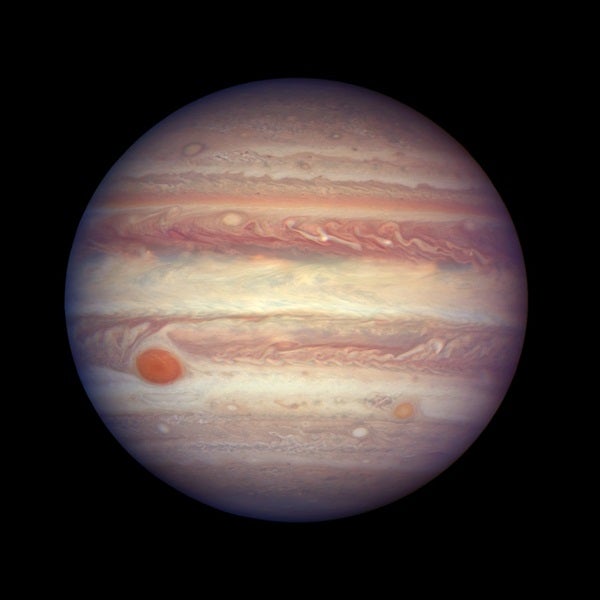Jupiter’s atmosphere is rife with swirling clouds, incredible winds, and storms that last for hours, days, months, years, and even centuries. Its iconic Great Red Spot, which has recently been joined by “Red Spot Junior” at lower latitudes, has been shrinking for at least the past 100 years, with planetary scientists still trying to determine why. The OPAL program, which began in 2014, aims to increase understanding of the outer planets’ atmospheres in the hopes of better characterizing the atmospheres of similarly sized exoplanets circling other stars. Closer to home, the same atmospheric research can be applied to the behavior of Earth’s weather systems.
If you’re an observer or planetary enthusiast, consider stepping outside tonight to view Jupiter at its best. You can spot the planet easily with the naked eye in the east following sunset, and even a small telescope will reveal its most prominent cloud features and largest moons.
You can view and download larger versions of this image at www.spacetelescope.org.










